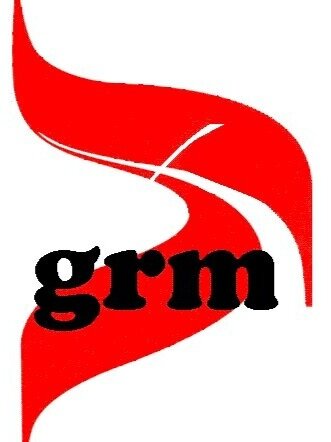WE DON’T GET TO PICK OUR PARENTS … Part 2 (Post 83)
SUNDAY, JUNE 5, 2016
Post 83
WE DON’T GET TO PICK OUR PARENTS … Part 2
As promised, this June edition of the GRM Blog continues the theme of what it is like living with a problem gambler parent (and/or sibling). As a reminder of those issues and dilemmas faced by children in such households, take a quick glance at the listings within May’s post. What stands out to me is that each of these issues provides fertile ground for the seeds of dysfunction to grow within the sons and daughters of those suffering from gambling addiction.
In other words, the compulsive gambler in the family is not the only person who is affected by the presence of addiction. Indeed, the addiction-connected-struggles in family life extend far beyond the gambler! Friends in Recovery who authored “The 12 Steps for Adult Children” (Recovery Publications, Inc., San Diego, 1987) detail, through a guided narration of the 12 Steps to Recovery, common responses to self-identity and interpersonal relations experienced by – now – adult children who grew up in dysfunctional and addictive homes.
Incredibly and sadly, those issues experienced by the compulsive gambler often become similar to those developing within his/her children: guilt, denial, shame, isolation, mistrust, insecurity, and problems with intimacy.
So let’s get on with the children – what words of comfort and guidance can be given?
Before this, however, it is important to keep in mind that children want to be able to trust their parents; and yes, that is the healthy role for parents – to be trustworthy role models. Moreover, gambling addiction is hard to identify … no needle marks, falling down stupors, slurred speech, or actual substances. Moreover, the explanations and excuses offered by the problem gambler may sound quite logical. To kids, gambling addiction probably doesn’t sound like an illness … maybe just a matter of bad luck - which always has the hope for next time.
COMFORT
Three basic understandings, therefore, need to be stated first and shared with children:
· As previously noted, it is important that compulsive gambling is understood as an addiction – an illness. Harmful words, untrustworthy actions, lack of financial security, and other poor choices are NOT to be interpreted as the child’s fault, responsibility, or personal area of control.
· The child (of a compulsive gambler) is not the only one who has a family affected by gambling addiction. Although this tends to be minimized (unfortunately) by the public and some professionals, compulsive gambling is a devastating addiction experienced by many lives. Often – especially because of financial struggles – families of problem gamblers tend to isolate themselves. Shame, experienced by the non-gambling spouse, sadly can prevent the much needed reaching-out for help.
· Therefore, talking about the gambling problem in the family to a trusted person can provide a healthy outlet for the child. He/she can ask questions, sense security, and not feel alone with the issues that may have caused him/her to identify as helpless, different from others, and/or somehow a cause for the problem. In such settings, the child can process both fear and anger issues that commonly – and normally - arise when a parent is a compulsive gambler.
GUIDANCE
Finally, and in addition to the above information, what guidance can be given to a child whose parent’s dysfunctional influence on the family may have far-reaching effects throughout the child’s life?
(Note: interestingly, the following can be applied to both the children of compulsive gamblers and those significant adults (spouses, friends, co-workers, other family members) affected by gambling addiction.)
· The strengths of a person should always be recognized. Healthy self-confidence goes a long way in combating the negatives of others’ addictions. Goal-setting (both short and long term) can help a person feel accomplished as well as a sense of order (especially in a chaotic home environment).
· Healthy outlets of enjoyment help to release tension, anger, and fear … even for a short time. Sports, other physical activities, hobbies, leisure reading, creative writing, crafts, and other new skills are all possibilities.
· Thankfulness: there may be plenty of negatives; but a steady mindset of gratitude (even for tiny thanksgivings) opens the door to more balanced-thinking - particularly when everything seems to be in the negative column at home.
· Experiencing the impact of another’s addiction can be a personal motivator to respond carefully/wisely when critical choices arise in one’s life.
(A word of caution: at times, however, the actions/attitudes of the parent/older sibling may play a detrimental, role-modeling effect when it comes to the introduction and inclusion of at-risk behaviors.)
Gam-Anon, the support organization for family, friends, and associates of compulsive gamblers, provides additional notes of guidance: do something positive for others; tackle one thing at a time; don’t be unrealistic and set self-expectations too high; watch out for being overly-critical of others. Check out www.gam-anon.org for more tips and helpful information!
Finally, I want to close this mini-series with an essential reminder …
For children and teens as well as adults, we may be the trusted, safe person - the one to whom someone seeks guidance about problem gambling in the home. We don’t have to have all of the answers to their questions but we can listen and guide them to help and support groups. We can be the encouraging voice that helps open that critical door to recovery!
Blessings,
Rev. Janet Jacobs
Founding Director
Gambling Recovery Ministries
For more information on problem gambling and recovery issues, go to:
www.gam-anon.org
www.gamblersanonymous.org
www.indianaproblemgambling.org/family.cfm
www.problemgambling.ca.gov/ccpgwebsite/impacts-on-family.aspx
www.ncgambling.org
www.grmumc.org
Posted by Gambling Recovery Ministries at 4:48 PM
